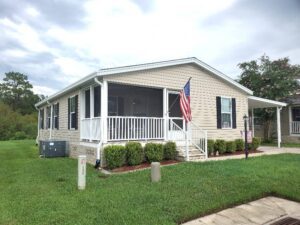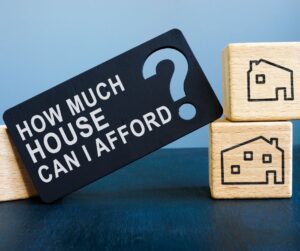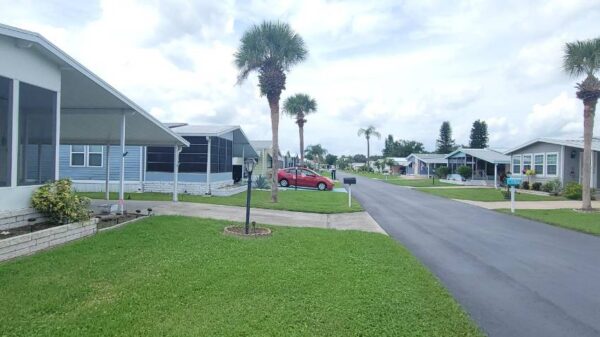Buying a Manufactured Home When Prices Are High
When the real estate market heats up, potential homebuyers often look for alternatives to traditional site-built homes. One increasingly popular choice is the manufactured home. These homes offer affordability, customization, and modern design—appealing features when home prices across the country are climbing. But how do you buy a manufactured home when prices are high?
This comprehensive guide will walk you through everything you need to know about buying a manufactured home during a time of inflated costs—so you can make a wise, well-informed investment.
Table of Contents
1. What Is a Manufactured Home?
A manufactured home is a type of prefabricated housing that is built off-site in a factory setting and then transported to its final location for installation. These homes are constructed under the authority of a national building code known as the HUD Code, which was established in 1976 by the U.S. Department of Housing and Urban Development (HUD). This federal code sets strict standards for design, construction, durability, transportability, energy efficiency, and safety.
Manufactured homes have come a long way from the old “mobile homes” of decades past. While the term “mobile home” is still often used colloquially, it technically applies only to homes built before June 15, 1976, the date when the HUD Code was enacted. Homes built after that date and compliant with HUD standards are officially classified as manufactured homes.
1.1 Key Characteristics of Manufactured Homes
Manufactured homes differ from site-built homes in several significant ways, but they are also increasingly similar in appearance and function:
Factory-Built Construction
-
Controlled Environment: Manufactured homes are built in indoor facilities where weather delays, theft, or material damage are virtually nonexistent. This leads to consistent quality and reduced construction times.
-
Streamlined Production: These homes are built using assembly-line techniques that allow for quicker turnaround and standardized construction.

Transportation and Installation
-
Once completed, the home is transported in one or more sections to the site.
-
Most are built on a steel chassis, which remains a permanent part of the home’s structure.
-
The home is either placed on a temporary foundation (like blocks or piers) or a permanent foundation, such as concrete slabs or crawlspaces.
-
After being anchored and connected to utilities, the home is inspected and certified for occupancy.
Compliance with the HUD Code
The HUD Code requires all manufactured homes to meet the following minimum standards:
-
Structural Design: The home must withstand certain wind and snow loads based on its regional location.
-
Thermal Protection: Insulation standards ensure energy efficiency.
-
Plumbing and Electrical Systems: Must meet national safety standards.
-
Fire Safety: Homes must include smoke detectors, safe egress windows, and flame-retardant materials.
-
Transportability: The structure must be able to be transported on public roads without special permits beyond standard wide-load permissions.
Each compliant home will have a red HUD label (data plate) affixed to the exterior. This is a critical detail for both legal compliance and resale.
1.2 Types of Manufactured Homes
Manufactured homes come in different configurations depending on the size, layout, and how many “sections” are built:
Single-Wide
-
Typically 14 to 18 feet wide and 52 to 80 feet long.
-
Narrow and compact, ideal for smaller lots or budget-conscious buyers.
-
Generally includes 1–2 bedrooms and 1–2 bathrooms.
Double-Wide
-
Two sections joined together onsite.
-
Ranges from 20 to 32 feet wide and up to 90 feet long.
-
Offers a more “traditional” home feel, with wider living spaces and more rooms.
-
Often includes 3 bedrooms and 2 bathrooms.
Triple-Wide and Larger
-
Three or more sections joined onsite.
-
Resemble custom-built homes in terms of space and features.
-
Can include large kitchens, master suites, walk-in closets, and bonus rooms.
1.3 Manufactured Homes vs. Other Prefab Options
It’s easy to confuse manufactured homes with similar terms, so here’s how they compare:
Manufactured Homes vs. Modular Homes
-
Modular homes are also built in factories but must conform to local state and building codes rather than the HUD Code.
-
Modular homes are transported in pieces and assembled on-site, often on permanent foundations.
-
Once assembled, modular homes are often indistinguishable from traditional homes and can qualify for the same types of mortgages.
Manufactured Homes vs. Mobile Homes
-
The key difference is the build date: mobile homes were built before June 15, 1976.
-
Mobile homes do not conform to HUD Code and may not qualify for modern financing or insurance.

-
Manufactured homes are generally more energy-efficient and safer due to updated building standards.
Manufactured Homes vs. Tiny Homes / Park Models
-
Tiny homes are generally under 400 square feet and may not be HUD-compliant.
-
Park model RVs are considered recreational vehicles, not full-time residences under HUD.
-
Manufactured homes are built for full-time, year-round occupancy.
1.4 The Evolution of Manufactured Homes
In the past, manufactured homes carried a stigma of being “lesser than” site-built homes. But that has changed significantly, especially over the past two decades. Today’s manufactured homes are:
-
Visually appealing: They often include vinyl or fiber cement siding, architectural shingles, and full drywall interiors.
-
High-tech: Smart thermostats, energy-efficient windows, LED lighting, and even solar readiness are becoming standard.
-
Comfortable and spacious: Open floor plans, kitchen islands, walk-in closets, and luxury bathrooms are common.
-
Customizable: Buyers can choose finishes, flooring, cabinetry, paint colors, and more.
These improvements, combined with their affordability, have made manufactured homes an increasingly attractive option for retirees, first-time buyers, and even investors and making it easier while buying a manufactured home when prices are high.
1.5 Where Can Manufactured Homes Be Placed?
Manufactured homes can be placed in a variety of settings, depending on zoning laws and personal preferences:
-
Manufactured Home Communities: These offer shared amenities and often include lot rent or homeowner association (HOA) fees.
-
Private Land: Ideal for long-term investment, especially if you already own land or plan to develop it.
-
Suburban and Rural Lots: Many rural areas are more permissive about manufactured homes and may offer more affordable land options.
-
Urban Infill Lots: In some cities, manufactured homes are being used to infill small lots as part of affordable housing initiatives.
Be sure to check zoning laws, deed restrictions, and neighborhood covenants before placing a manufactured home.
1.6 The Bottom Line
A manufactured home is not just a trailer or mobile unit—it’s a full-fledged residence built to rigorous federal standards. With today’s rising housing prices, it represents an increasingly realistic and rewarding path to homeownership.
Understanding what qualifies as a manufactured home, how it’s built, where it can be placed, and how it compares to other options is the foundation of making a smart purchase—especially when prices are high and competition is intense.
2. Why Prices Are High: Understanding Market Trends
Manufactured homes have long been seen as a more budget-friendly alternative to site-built homes, but in recent years, prices for manufactured housing have seen a sharp increase. For buyers, this can be confusing—especially when the appeal of manufactured homes has traditionally been rooted in affordability.
So, what’s driving the rise in prices? Let’s break down the current market dynamics influencing manufactured home costs so you can better understand what you’re paying for—and how to navigate the landscape strategically.
2.1 A Surge in Demand for Affordable Housing
 One of the most significant drivers behind the increase in manufactured home prices is simply demand. As the cost of site-built homes has soared due to inflation, high interest rates, and housing shortages, many prospective buyers—especially first-timers, retirees, and downsizers—have turned to manufactured housing as a more accessible option.
One of the most significant drivers behind the increase in manufactured home prices is simply demand. As the cost of site-built homes has soared due to inflation, high interest rates, and housing shortages, many prospective buyers—especially first-timers, retirees, and downsizers—have turned to manufactured housing as a more accessible option.
Why the demand is spiking:
-
Wages haven’t kept up with housing prices, leaving many Americans priced out of the traditional market.
-
Interest rates have risen, making monthly mortgage payments more expensive across the board.
-
Millennials and Gen Z buyers are entering the market in record numbers, creating more competition.
-
Retirees are selling larger homes and looking for affordable alternatives in warmer climates or near family.
With manufactured homes offering quicker build times and lower base prices, they have become a go-to solution for cost-conscious buyers—which has, in turn, pushed prices upward due to classic supply-and-demand economics.
2.2 Supply Chain Disruptions and Material Shortages
Another key reason prices are high is the ripple effect of global supply chain disruptions that began in 2020 and are still being felt today. The manufactured housing industry relies on a wide range of materials—wood, metal, insulation, plumbing fixtures, wiring, windows, roofing materials, and more.
Impact of material shortages:
-
Lumber prices spiked during the pandemic, sometimes more than tripling. Although prices have stabilized somewhat, they’re still higher than pre-2020 levels.
-
Steel costs (used in frames, chassis, and structural reinforcements) have risen due to global demand and production bottlenecks.
-
Appliances and HVAC systems have been on backorder due to shortages in semiconductors and electronic components.
-
Transportation costs (fuel, shipping containers, logistics) have increased sharply, affecting delivery pricing for both raw materials and the homes themselves.
When manufacturers pay more for the components that go into building a home, those costs inevitably trickle down to the buyer.
2.3 Labor Shortages in the Construction Sector
Like many industries, the construction and manufacturing workforce has been hit by labor shortages. Experienced tradespeople—framers, electricians, plumbers, and HVAC installers—are in short supply. Even factory assembly line jobs have been hard to fill due to increased competition for workers, higher wage expectations, and shifts in the labor market.
Consequences of labor shortages:
-
Production delays: Homes that might have taken 4–6 weeks to build are now taking 10–12 weeks or more.
-
Higher wages: Manufacturers must offer higher pay to attract workers, which adds to the cost of construction.
-
Less competition: Fewer workers means fewer homes being built, which keeps inventory low and demand high.
For buyers, this means waiting longer and potentially paying more for homes due to backlogs and increased labor expenses.
2.4 Inflation and General Economic Conditions
Inflation affects every sector—including housing. As the Consumer Price Index (CPI) increases, the cost of goods and services follows, and housing is no exception.
Inflation’s effect on manufactured housing:
-
Manufacturing plants face higher costs for utilities, maintenance, insurance, and compliance.
-
Dealerships and sellers are passing on inflation-related cost increases to buyers.
-
Financing costs have risen as interest rates climb, making the total cost of ownership higher.
Even if the base price of a manufactured home hasn’t changed dramatically, buyers are paying more overall due to increased financing costs, insurance premiums, and setup fees.
2.5 High Demand for Land and Limited Availability
While the home itself may be affordable, land prices are a different story—and they’re rising quickly in many parts of the country. Manufactured homes need somewhere to go, and the availability of properly zoned, affordable land is shrinking.
Factors driving land prices higher:
-
Urban expansion and sprawl are eating up previously inexpensive rural lots.
-
Zoning restrictions in many cities limit where manufactured homes can be placed.
-
Investors and developers are purchasing manufactured home parks, driving up lot rents and reducing availability for individual buyers.
In areas with high land costs, buyers may find that even though the manufactured home itself is reasonably priced, the total cost of land, site prep, and utility installation can make the project far more expensive than expected.
2.6 Investor Interest in Manufactured Housing
Wall Street has discovered manufactured housing—and that’s both a blessing and a curse for individual buyers.
What’s happening:
-
Real estate investment firms are buying up manufactured home communities (MHCs), particularly in high-growth areas.
-
They often increase lot rents and charge additional fees, making parks less affordable for residents.
-
Some firms are also purchasing new homes in bulk directly from manufacturers, limiting inventory for retail buyers.
This investor activity has contributed to rising prices and lower availability, especially for buyers looking to place a home in a manufactured housing community.
2.7 Regulatory and Compliance Costs
Although HUD’s oversight brings standardization and safety, it also introduces compliance costs that add to the price of manufacturing and delivering homes.
Costs tied to regulation include:
-
Inspection fees
-
Transportation permits
-
Building code compliance testing
-
Dealer licensing requirements
As federal, state, and local agencies update codes and enforce stricter guidelines (for things like hurricane tie-downs, fire safety, and energy efficiency), those changes often come with associated costs that are passed on to the buyer.
2.8 Seasonal and Regional Variations
Manufactured home pricing also varies depending on seasonal patterns and regional demand.
-
In warmer climates, demand tends to remain strong year-round, but peaks during winter months when retirees flock south.
-
In northern states, production may slow in the winter due to weather or transport delays, tightening supply.
-
Natural disasters (such as hurricanes, floods, or wildfires) in a particular region can create a sudden spike in demand as residents look for quick housing replacements.
When multiple regions experience heightened demand simultaneously (as has been the case post-pandemic), it puts pressure on manufacturers to meet deadlines and results in higher base prices across the board.
2.9 Shift Toward Higher-End Models
Today’s manufactured homes are far more customizable than ever before. Buyers can choose from granite countertops, stainless steel appliances, luxury vinyl plank flooring, tray ceilings, and more. Customizing can reduce costs of buying a manufactured home when prices are high.
Upscale models come at a higher cost—and more buyers are choosing these options as they use manufactured homes for full-time living rather than seasonal or temporary housing.
As a result:
-
Average sales prices are skewing upward, even though base models are still relatively affordable.
-
Manufacturers are prioritizing high-margin upgrades, which boosts their profits but may raise entry-level pricing over time.
-
Customizations extend build times, which can also contribute to higher final costs.
2.10 Summary: A Perfect Storm of Pressure
To sum it up, the high prices for manufactured homes are being driven by:
-
Increased demand across all demographics.
-
Rising material and labor costs.

-
Limited land availability and zoning restrictions.
-
Inflation and high interest rates.
-
Investment activity in manufactured home communities.
-
Regulatory costs and upgraded consumer preferences.
It’s a perfect storm of economic and industry-specific factors—all contributing to elevated prices.
But that doesn’t mean manufactured homes are no longer a good deal. In fact, compared to site-built homes, they remain one of the most affordable paths to homeownership in 2025. Understanding why prices are high helps you make informed choices and recognize real value when you see it.
3. Pros and Cons of Buying in a High Market
Buying a manufactured home in a high market can feel counterintuitive. Isn’t the whole point of manufactured housing to save money? If prices are elevated, some buyers wonder whether they should wait—or dive in before things get worse.
The truth is, there’s no one-size-fits-all answer. Every market cycle has its advantages and disadvantages, and understanding the pros and cons of buying during a high market is essential for making a confident, informed decision. In this section, we’ll explore both sides to help you determine whether now is the right time for you.
3.1 Pros of Buying When Prices Are High
A. Locking in Future Appreciation
When you buy in a rising market, you’re not just paying more—you’re potentially gaining more down the line. Manufactured homes that are placed on owned land or in desirable communities can appreciate in value, especially if demand continues to outpace supply.
Why it matters:
-
Waiting could mean paying even more later if prices continue to rise.
-
The manufactured home market has seen steady appreciation in many regions, particularly for newer homes on permanent foundations.
-
With inflation in the mix, the dollars you spend now may hold more purchasing power than they will in a few years.
B. Low Inventory = Higher Competition = More Value Stability
In a high-price environment, competition is fierce—but that also means that what you buy holds value. When supply is tight and demand is high, homes sell faster and retain higher resale prices, even in manufactured housing.
You benefit because:
-
If you need to sell or refinance later, you’re less likely to lose money.
-
A strong resale market gives you peace of mind and options.
-
You’re likely buying into an asset class that has momentum and public interest—particularly as housing affordability continues to decline.
C. Better Selection of Locations and Communities
During high-demand cycles, manufacturers and community developers often expand their offerings to capture more business. As a buyer, you might benefit from new lots, improved parks, and incentives designed to attract residents.
What this could mean for you:
-
New or upgraded communities with better amenities (clubhouses, pools, security, etc.).
-
Greater geographic variety as developers push into new cities and suburbs.
-
Builder incentives such as discounted skirting, included appliances, or move-in packages.
D. Favorable Financing Before Rates Climb Higher
Even if interest rates feel high now, they can always go higher. Buying in the current market lets you lock in a rate before another rate hike—and many lenders offer refinancing options later if rates fall.
Benefits of buying now:
-
Securing a fixed-rate loan before further increases.
-
Manufactured housing lenders may offer creative loan packages such as FHA Title I, VA, or USDA programs.
-
You can take advantage of buy-downs or incentives from dealers and lenders eager to keep business moving.
E. Personal and Lifestyle Needs Don’t Always Follow the Market
Sometimes, the right time to buy isn’t about the market—it’s about you.
-
You need a home to downsize into.
-
You’re relocating for work or family.
-
You’re retiring and want to stop renting.
-
Your current housing situation is unstable or unaffordable.
If your life circumstances call for a move, the current market shouldn’t necessarily delay your decision. A well-selected manufactured home—even at a higher price—can improve your quality of life significantly and immediately.
3.2 Cons of Buying When Prices Are High
A. Higher Upfront Costs
This is the most obvious drawback: buying in a high market means paying more than you might have just a year or two ago.
-
Homes, lots, and community space fees are all elevated.
-
Delivery and installation costs may be higher due to fuel and labor surcharges.
-
Site prep, utility hookups, and permitting may cost more than expected.
This can affect your budget, financing, and overall affordability.
B. Reduced Negotiation Power
In a hot market, sellers and dealers are less motivated to negotiate. There are often multiple buyers lined up, and you may not get the price flexibility or incentives you’d hope for.
What you might lose:
-
Lower chances of scoring free upgrades or price reductions.
-
Less ability to negotiate on lot rent or community fees.
-
Pressure to move quickly without time for in-depth comparisons.
C. Risk of Short-Term Market Correction
No market rises forever. If you buy at the peak of a pricing wave, there’s a possibility that prices will cool or decline in the near term—especially if interest rates fall and supply increases.
What this could mean:
-
Your home’s value may dip slightly in the first few years.
-
If you sell too soon, you might lose money on closing costs, fees, and depreciation.
-
The investment could feel “upside down” if your loan balance exceeds market value temporarily.
However, this is often a short-term issue—especially for buyers who plan to hold their home long-term or live in it full time.
D. Higher Financing Costs Over Time
If you’re financing your home purchase, higher interest rates mean you’ll pay more in interest over the life of the loan.
Example:
-
A $100,000 loan at 4% interest costs you ~$71,870 in interest over 30 years.
-
That same loan at 7% interest costs you over $139,000 in interest.
This affects monthly payments, total loan costs, and debt-to-income ratios. It can also impact your approval odds with lenders.
E. Emotional Pressure and FOMO
When the market is hot, buyers often feel rushed into decisions to avoid missing out. This emotional pressure can lead to:
-
Skipping inspections.
-
Settling for less than ideal layouts, parks, or locations.
-
Overpaying or stretching beyond your budget.
In a high-pressure environment, it’s essential to stay grounded, do your research, and make decisions based on facts—not fear.
3.3 Weighing the Decision: Is It Worth Buying Now?
Here are a few questions to help guide your decision:
✅ Do you have a stable source of income and a good credit score?
This will help you access better financing and afford your purchase more comfortably.
✅ Is this a long-term living situation?
If you’re planning to stay in the home for several years, short-term fluctuations are less important.
✅ Do you have a clear understanding of your total budget?
This includes the home, land or lot rent, setup costs, and ongoing expenses.
✅ Have you done your due diligence on communities, builders, and financing options?
Knowledge is power—especially in a fast-moving market.
✅ Would waiting put your housing situation at risk or worsen your quality of life?
In many cases, paying slightly more now may be worth it to secure a safe, stable, and enjoyable living environment.
3.4 Final Thoughts on High-Market Buying
Buying a manufactured home when prices are high can feel daunting—but it can also be a strategic and beneficial move if approached with the right mindset and preparation. Remember:
-
Manufactured housing remains one of the most affordable homeownership options, even in a hot market.
-
Timing the market perfectly is almost impossible, but making a smart, well-researched decision is always within your control.
-
You’re not just buying a home—you’re buying stability, security, and independence.
If you weigh the pros and cons carefully, set a firm budget, and choose your location and home wisely, buying during a high market can still be a rewarding and financially sound decision.
4. Strategies for Buying Smart When Prices Are High
If you’ve decided to move forward with purchasing a manufactured home despite the high prices, the next step is figuring out how to maximize value and minimize risks. Thankfully, smart strategies and careful planning can help you navigate this challenging market with confidence.
This section will guide you through the most effective ways to shop, finance, and negotiate when prices are inflated—and help you come out ahead in the long run.
4.1 Get Pre-Approved Before You Shop
Before you start browsing homes or walking onto a dealer’s lot, get pre-approved for financing. Knowing exactly how much you can afford will keep you focused, give you leverage with sellers, and help avoid heartbreak over homes outside your budget.
Tips:
-
Shop around for lenders who specialize in manufactured home loans—especially if your home won’t be placed on a permanent foundation.
-
Consider FHA, VA, or USDA loans if you qualify. These government-backed options often come with lower interest rates or smaller down payments.
-
Don’t just look at the interest rate—also compare closing costs, origination fees, and loan terms.
Pro Tip: A pre-approval letter shows sellers and dealers that you’re serious and qualified, which can help in negotiations.
4.2 Set a Firm, All-In Budget
In a high market, it’s easy to get swept up in excitement and overspend. Manufactured homes often offer enticing upgrades, finishes, and package deals—but everything adds up fast.
Your all-in budget should include:
-
Home cost (base price plus upgrades)
-
Delivery and setup

-
Land or lot purchase/lease
-
Utility connections (water, sewer, electric)
-
Skirting, decks, and driveways
-
Permits and inspection fees
-
Moving costs or storage
-
Ongoing monthly payments (lot rent, insurance, utilities, loan payments)
Goal: Know your numbers before you shop so you don’t fall for “a great deal” that blows your financial plan.
4.3 Buy the Home First, Then Secure the Land (or Vice Versa)
In many areas, land is limited or expensive. This creates a dilemma: Should you buy the land first or the home first? The answer depends on your location and timeline.
Option 1: Secure land first
If you want to own your land outright, prioritize finding a lot that is zoned for manufactured homes, has utility access, and suits your lifestyle (proximity to work, schools, etc.).
Option 2: Buy home first if placing in a park
If you plan to lease a space in a manufactured home community, you may want to purchase the home and then work with the park for placement and approvals.
Tips:
-
Don’t assume every parcel of land will allow manufactured homes—check zoning laws.
-
Some lenders require a land-home package to approve certain loans. Talk to your lender before finalizing anything.
4.4 Shop Around—And Be Willing to Walk Away
In a seller’s market, many buyers settle out of fear they won’t find anything better. But manufactured home dealerships and builders vary widely in price, quality, and customer service.
Smart shopping moves:
-
Visit multiple dealers and request itemized quotes.
-
Ask about backlogs, delivery timelines, and included features.
-
Look at used homes or repossessions for lower prices.
-
Check state-run housing agencies for affordable housing programs or approved dealers.
Important: If something feels off—too expensive, pushy sales tactics, or lack of transparency—walk away. There are plenty of reputable sellers out there.
4.5 Focus on Long-Term Value, Not Just the Sticker Price
When prices are high, your goal should shift from finding the cheapest option to getting the best long-term value. That means considering quality, durability, energy efficiency, and resale potential.
Key features that offer long-term savings:
-
Energy-efficient windows and insulation
-
Durable siding and roofing materials
-
High-quality HVAC systems
-
Modern plumbing and electrical
-
Warranty coverage on structure and appliances
Sometimes paying a little more upfront can save you thousands over time in maintenance, utility bills, and repairs.
4.6 Be Strategic With Upgrades
Manufactured home builders often offer a menu of upgrades, from cosmetic to functional. These upgrades can add convenience and comfort—but also cost.
Upgrade wisely:
-
Invest in upgrades that add long-term value or reduce costs (e.g., insulation, metal roofing).
-
Consider skipping cosmetic features you can DIY later (e.g., backsplashes, light fixtures).
-
Ask if you can do some features (like porches or garages) after delivery at a better price through a local contractor.
Tip: Don’t go upgrade-crazy at the dealership. Some add-ons are marked up heavily compared to sourcing them yourself.
4.7 Explore Different Placement Options
Where you place your home affects both your initial cost and monthly expenses.
Options include:
-
Buying land – Higher upfront costs but long-term investment and control.
-
Leasing a lot in a manufactured home community – Lower upfront cost, but subject to rising lot rents.
-
Land lease communities with included utilities or amenities – Good value for retirees or those seeking convenience.
Bonus Tip: If you’re buying in a community, ask about:
-
Lot rent history (have prices spiked recently?)
-
Community rules (can you rent out your home?)
-
Amenities and maintenance (included or extra?)
-
Reputation and ownership (privately owned vs. corporate)
4.8 Understand the Total Cost of Ownership
Even after buying, owning a manufactured home involves ongoing costs. Budgeting for these will help you avoid surprises.
Ongoing costs may include:
-
Loan payments
-
Property taxes or lot rent
-
Home insurance (some policies are specific to manufactured homes)
-
Utilities (water, sewer, trash, electricity)
-
HOA or community fees
-
Maintenance and repairs
Ask yourself: Will your monthly budget comfortably cover all these expenses? If not, scale back your home or location choice before you buy.
4.9 Look Into Assistance and Subsidy Programs
Several states and nonprofit organizations offer affordable housing assistance, especially for first-time homebuyers, veterans, and low-income families.
Look for:
-
State housing agency grants or down payment assistance
-
USDA rural housing loans (for homes placed in rural areas)
-
VA manufactured home loans (for veterans and service members)
-
FHA Title I and Title II programs (with lower down payments)
-
Nonprofit lending programs like Habitat for Humanity or community land trusts
These programs can reduce your out-of-pocket costs and improve your buying power.
4.10 Work With a Manufactured Home Specialist
Buying a manufactured home is different from buying a traditional home. It helps to work with experts who specialize in this sector.
Helpful professionals:
-
Manufactured home dealers with transparent pricing and local experience
-
Loan officers who work specifically with manufactured home loans
-
Real estate agents who know local zoning laws, park regulations, and land values
-
Installers and contractors with experience setting up manufactured homes
Working with the right team ensures that nothing falls through the cracks—especially when it comes to permits, utilities, and financing.
4.11 Consider Buying Used or Refurbished Homes
If new home prices are out of reach, a used manufactured home might be your best bet. These homes often cost 30–50% less than new ones, and many are in excellent condition.
What to watch for:
-
Get an inspection from a certified manufactured home inspector.
-
Make sure the title is clean and taxes are up to date.
-
Review the age of the home (homes built after 1976 must meet HUD standards).
-
Ask about relocation costs if the home needs to be moved.
Pro Tip: Some manufacturers and dealers offer certified pre-owned homes that include warranties or financing options.
4.12 Take Advantage of Off-Peak Times
While the market might be high overall, there are still seasonal cycles in manufactured home sales. Shopping during the off-season can sometimes yield better deals.
When to shop:
-
Late fall and winter are typically slower for sales, especially in colder regions.
-
End of the month or quarter when dealers are trying to hit sales quotas.
-
At home shows or expos, where special pricing and discounts are offered.
4.13 Think Like an Investor
Even if you’re buying your forever home, it’s wise to think like an investor. Ask yourself:
-
Will this home hold its value in five or ten years?
-
Is the location attractive to future buyers or renters?
-
Are there signs of long-term growth (job market, infrastructure, amenities)?
Choosing wisely now will help protect your investment—and your peace of mind—down the road.
4.14 Build in Flexibility for the Unexpected
No matter how well you plan, surprises happen—especially in a volatile market.
Plan for:
-
Delivery or installation delays
-
Permit or zoning holdups
-
Extra costs for site prep or hook-ups
-
Changing lender requirements
Building flexibility into your timeline and budget will reduce stress and give you room to adjust as needed.
4.15 Summary: Be Patient, Be Strategic, Be Prepared
Even when prices are high, smart buyers can find great deals, avoid costly mistakes, and secure long-term value.
Let’s recap your strategy:
✅ Get pre-approved and know your full budget
✅ Shop around and negotiate—even in a seller’s market
✅ Invest in value-adding upgrades, not just cosmetic ones
✅ Explore all placement options and understand the cost of land or lot rent
✅ Use professionals who specialize in manufactured housing
✅ Stay patient, avoid emotional decisions, and always read the fine print
With the right mindset and preparation, you can still win in a high market—and end up with a home that meets your needs, supports your lifestyle, and protects your financial future.
5. Financing and Loan Options for Manufactured Homes
Securing financing is one of the most important—and often most confusing—parts of buying a manufactured home, especially in a high-price market. Unlike traditional site-built homes, manufactured homes are subject to different lending rules depending on where the home will be located, whether it’s permanently affixed to land, and what type of loan you qualify for.
This section will help you understand the different financing paths available, how to qualify, and how to make the smartest borrowing choices in today’s market.
5.1 Why Financing a Manufactured Home Is Different
Manufactured homes can be financed in two main ways:
-
Chattel Loans (Personal Property Loans):
These treat the home as personal property—similar to a car loan. They’re common when the home is placed in a leased-land community or mobile home park. -
Mortgage Loans (Real Property Loans):
These treat the home and the land it sits on as real estate, like a traditional home mortgage. They typically require the home to be permanently installed on a foundation.
Key Difference: Mortgage loans generally offer better rates and terms, but you must meet more qualifications, including land ownership and HUD-compliance for the home.
5.2 Common Loan Options for Manufactured Homes
Here’s a breakdown of the most widely available financing programs:
A. FHA Loans (Federal Housing Administration)
FHA offers two main programs for manufactured homes:
-
FHA Title I Loan:
-
For purchasing or refinancing a manufactured home, lot, or both.
-
Can be used for homes in parks or on private land.
-
Often used for chattel financing.
-
Lower credit score requirements (as low as 580).
-
Max loan limits (e.g., $92,904 for home + lot as of 2025).
-
-
FHA Title II Loan:
-
For homes classified as real property (must be permanently affixed).
-
Must be built after June 15, 1976, and meet HUD code standards.
-
30-year fixed-rate mortgages available.
-
Must own the land or buy it in the same transaction.
-
Pros: Low down payments, easier qualification.
Cons: Must meet strict HUD and property requirements.
B. VA Loans (U.S. Department of Veterans Affairs)
If you’re a veteran, service member, or eligible spouse, a VA loan could be an excellent option.
-
Can finance a manufactured home and/or lot.
-
No down payment required.
-
No private mortgage insurance (PMI).
-
Competitive interest rates.
Pros: Affordable, no down payment, government backing.
Cons: Must meet strict standards for home condition and placement.
C. USDA Loans (U.S. Department of Agriculture)
These loans support rural homeownership for low-to-moderate-income buyers.
-
Home must be located in a USDA-eligible rural area.
-
Must be a real property loan (home on permanent foundation).
-
100% financing available—no down payment required.
-
Income limits based on household size and region.
Pros: No down payment, low interest rates, rural locations.
Cons: Geographic restrictions, primary residence only.
D. Conventional Loans (Freddie Mac & Fannie Mae)
These are standard mortgage loans that may apply to manufactured homes with stricter guidelines.
-
Home must be affixed to a permanent foundation and titled as real property.
-
Must be built to HUD code standards and have a minimum size (usually 600+ sq ft).
-
Higher credit score requirements (typically 620+).
-
Often used in land-home packages.
Pros: Lower rates for well-qualified buyers, can be used with owned land.
Cons: More documentation, higher credit standards.
E. Chattel Loans (Home-Only Financing)
This is the most common option for buyers placing a home in a park or leased lot.
-
Secured by the home only—not land.
-
Often shorter terms (15–20 years).
-
Higher interest rates than real property mortgages.
-
Fewer upfront requirements, more flexible for park placement.
Pros: Easier approval for park or leased-land placement.
Cons: Higher rates, depreciating asset risk, fewer protections.
5.3 Factors That Affect Your Loan Eligibility
To qualify for the best financing, lenders will evaluate a range of criteria:
A. Credit Score
-
FHA and VA: Often approved with scores as low as 580.
-
USDA and conventional: Prefer scores 620+.
-
Chattel lenders: May work with lower scores but charge higher rates.
B. Debt-to-Income Ratio (DTI)
-
Most lenders want your DTI to be under 43% (your monthly debts vs. income).
-
A lower DTI gives you more flexibility and better loan terms.
C. Down Payment
-
FHA: As low as 3.5%.
-
VA and USDA: 0% down.
-
Conventional: Usually 5–20% down.
-
Chattel loans: Typically 5–10% down minimum.
D. Land Ownership
-
Owning the land may unlock better loan options and lower rates.
-
Leasing land limits you to chattel loans or certain Title I programs.
5.4 How to Improve Your Loan Terms
If you want to reduce your monthly payment or qualify for a better rate, use these strategies:
-
Boost your credit score by paying down debt and correcting errors.
-
Save a larger down payment to reduce your loan balance.
-
Pay off other debts to improve your DTI ratio.
-
Shop multiple lenders to compare quotes—especially those who specialize in manufactured homes.
-
Choose a shorter loan term if you can afford it (e.g., 15 years vs. 30 years).
5.5 Where to Find Manufactured Home Lenders
Not every bank or credit union is comfortable financing manufactured homes, especially those on leased land. Your best bet is to contact specialized lenders, such as:
-
21st Mortgage Corporation
-
Vanderbilt Mortgage
-
Triad Financial Services
-
Cascade Financial
-
Local credit unions familiar with mobile home parks
-
State housing agencies
Tip: Your home dealer or community manager may also have lender partnerships with preferred terms.
5.6 Navigating High Rates in a High Market
If interest rates are currently high (as they often are during inflationary periods), here’s how to make a smarter financing move:
A. Consider Adjustable-Rate Mortgages (ARMs) Cautiously
-
May offer a low starting rate.
-
Risk of increases after initial term.
-
Better if you plan to sell or refinance before the rate adjusts.
B. Ask About Rate Buy-Downs
-
Some sellers or builders offer to “buy down” your rate temporarily (e.g., 2-1 buydown).
-
This lowers your monthly payment in the early years.
C. Plan to Refinance Later
-
If rates fall in the future, you can refinance to lock in a lower rate.
-
Choose loans without prepayment penalties or ask about refinance options upfront.
5.7 Financing Pitfalls to Avoid
To protect your investment, avoid these common financing traps:
-
Overborrowing beyond what you can afford.
-
Not factoring in all costs (insurance, taxes, lot rent, etc.).
-
Skipping the fine print—especially for interest-only or balloon loans.
-
Falling for scams or predatory lenders promising no-credit-check financing.
Reminder: If the deal seems too good to be true, it probably is. Always consult a trusted financial advisor or housing counselor before committing.
5.8 Final Thoughts on Manufactured Home Financing
Financing a manufactured home in a high-price market can be challenging—but with the right tools and planning, it’s entirely achievable.
Key takeaways:
-
Understand whether your home qualifies as real property or personal property.
-
Match your loan type to your land situation and long-term goals.
-
Improve your credit, reduce debts, and save for a down payment to access better terms.
-
Work with lenders who specialize in manufactured home financing.
-
Be cautious of rising interest rates and always read loan documents carefully.
With smart financial planning and professional guidance, you can secure a loan that works for your budget—and turn your manufactured home dream into a reality, even when prices are high.
Conclusion: Making the Smart Choice
Manufactured homes can be a solid investment—even when prices are high—if you’re well-informed, strategic, and financially prepared. While it’s true that you may pay more than you would have a few years ago, your focus should be on value, location, and long-term affordability.
With the right home, financing plan, and placement strategy, you can turn a challenging market into an opportunity—and find a place that feels like home.









